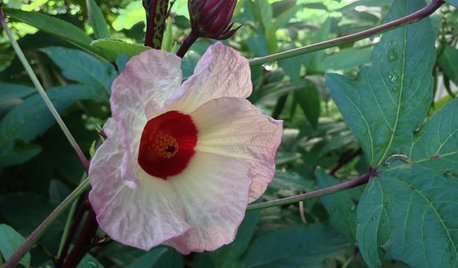Help with Trop-Hibiscus
xineohpinakc
14 years ago
Related Stories

LANDSCAPE DESIGNNative Plants Help You Find Your Garden Style
Imagine the garden of your dreams designed with plants indigenous to your region
Full Story
GARDENING GUIDESYou Don't Need Prairie to Help Pollinators
Woodlands, marshes, deserts — pollinators are everywhere
Full Story
EDIBLE GARDENSGreat Design Plant: Roselle Tantalizes With Beauty and Flavor
Call it a fruit or a flower or a sweet vegetable. This hibiscus is so lovely, all that matters is calling it forth in your garden
Full Story
GARDENING AND LANDSCAPINGBid Bad Garden Bugs Goodbye and Usher In the Good
Give ants their marching orders and send mosquitoes moseying, while creating a garden that draws pollinators and helpful eaters
Full Story
GARDENING GUIDESMake Sure You Read This Before Buying New Plants
Follow these 10 plant-selection tips to avoid buyer’s remorse
Full Story
PATTERNMix Pillow Patterns Like a Pro: 17 Foolproof Themes
Toss together one of these helpful pattern mixes for a sofa, chair or bed bursting with liveliness
Full Story
FALL GARDENINGReflecting on a Gardening Year
Mistakes and successes, surprises and comforts. The garden helps us grow in new ways every year
Full Story
LANDSCAPE DESIGNAdd a Touch of Sparkle With Recycled Glass in the Garden
See 7 practical and versatile ways to use recycled glass in the garden
Full Story
ARCHITECTUREPlantation Home Style Stars in 'The Descendants'
Woven fabrics, wicker furniture and, of course, the lanai all play their part in the Oscar-nominated film's tropical setting
Full Story
HOUZZ TOURSMy Houzz: High End Meets Budget Friendly in Toronto
Splurging selectively and saving elsewhere, a Canadian family gets a posh-looking home that matches their vision
Full StorySponsored






brianmkerr